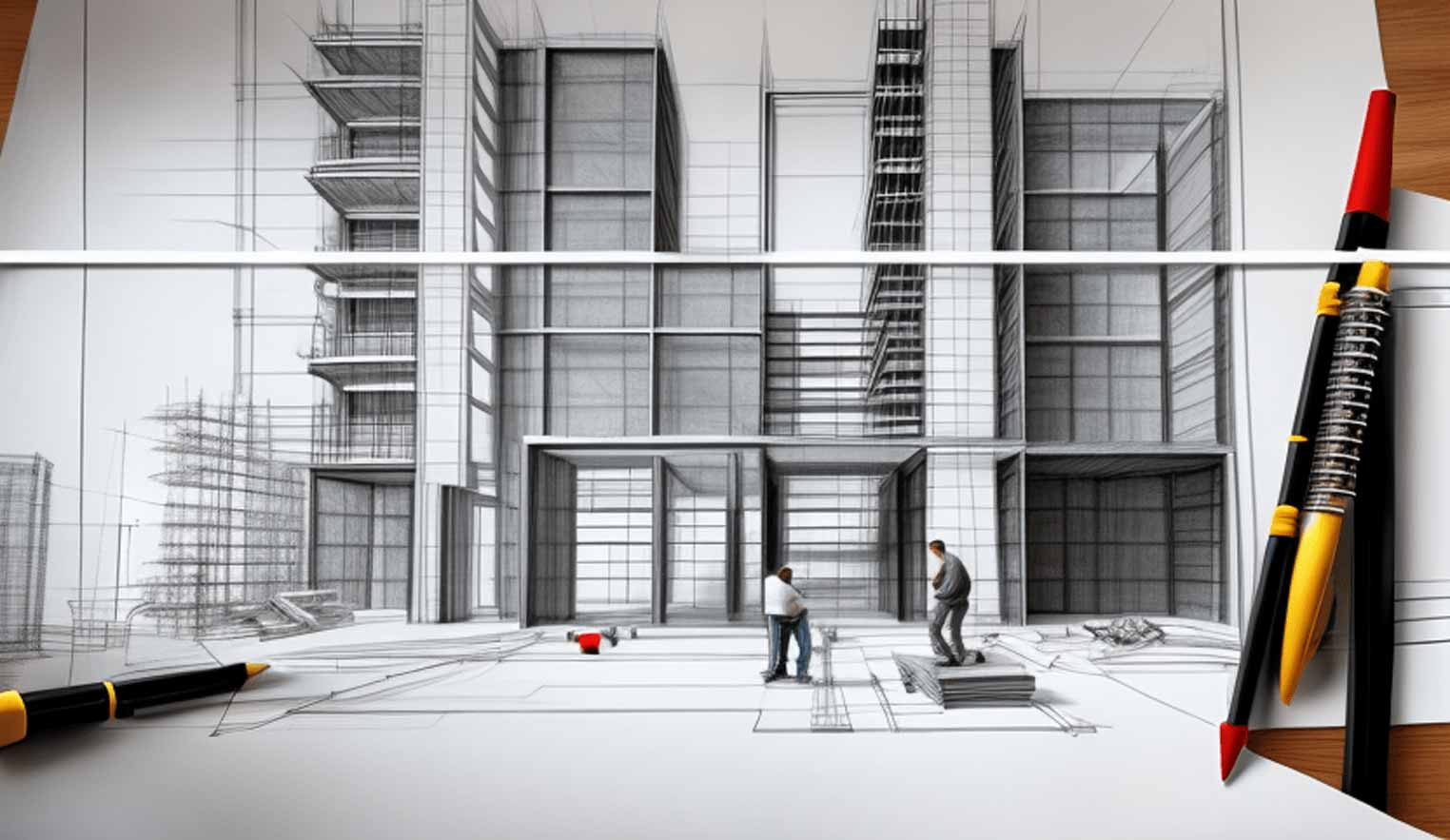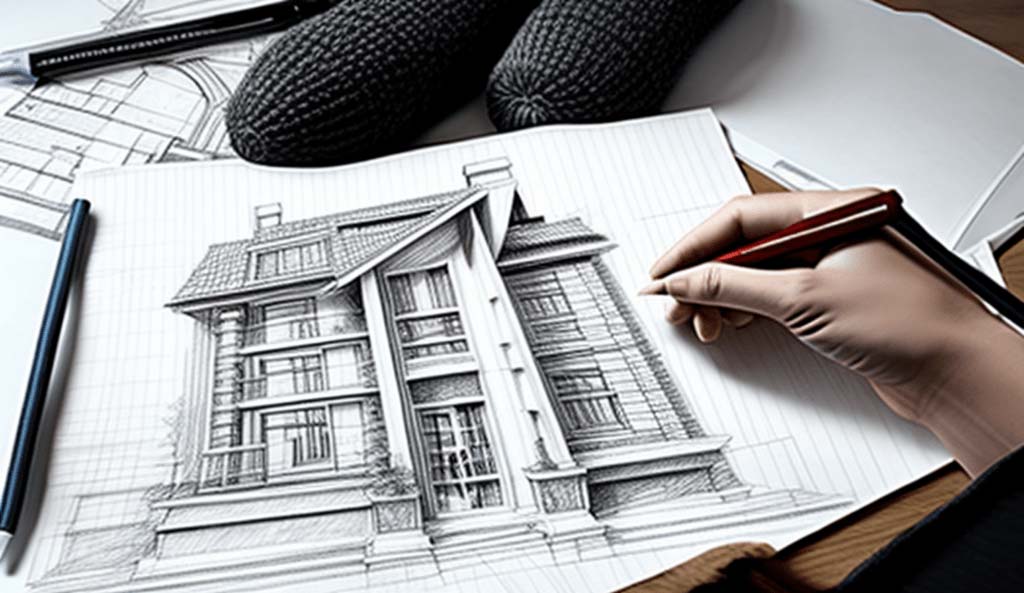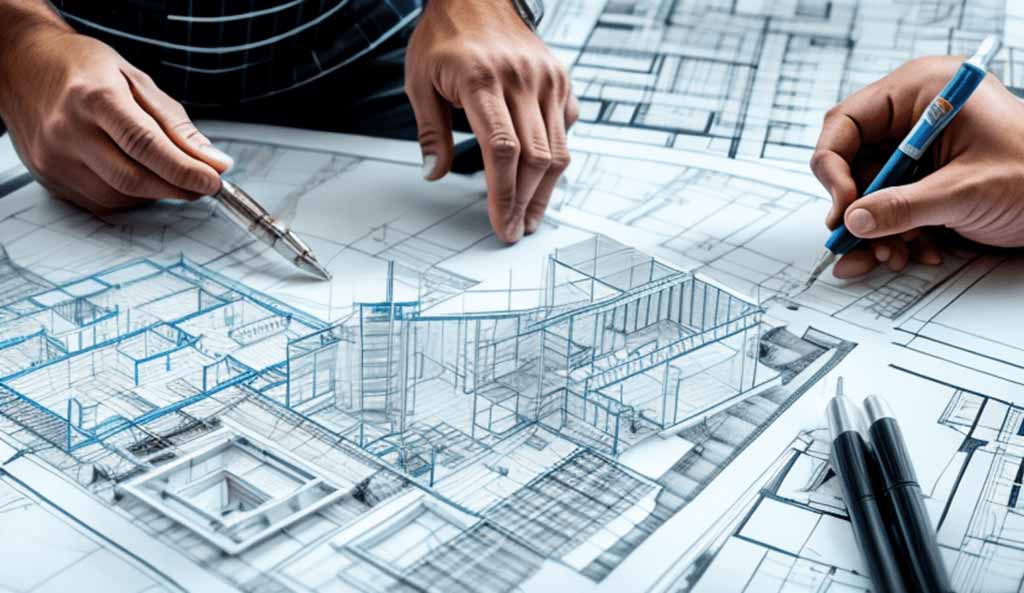
The Role of an Architect in the Design and Construction Process
From duplexes and townhome developments to single-family homes and commercial buildings, architects are involved in almost every building project to ensure structures are designed and built with quality, functionality, and safety in mind. While aesthetic design and beauty are also important, there is more to the role of an architect than meets the eye.
On that note, have you ever wondered where an architect’s responsibilities fit into the design and construction process? Well, it’s your lucky day! In this guide, the Robertson Architecture team will walk you through an architect’s role on a project, from the beginning stages of helping the client pick the perfect piece of land for their development to the moment construction is complete.
Phase 1: Design and Analysis
Pre-Design – Understanding the Client’s Needs and Vision
The architect’s role during a project isn’t only designing a beautiful building. A great deal of the job is ensuring that the design is safe, functional, and up to the local building codes and zoning ordinances while showcasing the design style their client wants to achieve. The architect creates the plans, and then the builder and construction team make the plans a reality.
The first role of an architect is to understand their client’s needs and desires for a development project. This clarity happens in the pre-design phase when the architect and client first sit down to discuss the scope of work. The pre-design meeting is a wide-ranging conversation covering everything from practicality and layout to materials and aesthetics. At this point, the architect will typically provide a loose sketch of the development to make sure they are on the same page as the client.
Pre-design is the daydreaming stage, where the client can share their goals for the development they wish to build. Budgeting is also an important part of the discussion in the pre-design phase. Your architect will listen carefully to your goals and manage expectations based on your budget, project size, location, and desired materials.
Budget Management
Early in the pre-design phase, the architect will discuss the project budget with the client and make sure the building plans align with that number. The material and building costs are estimates, but the architect will use the client’s budget to guide the design. The architect’s role is to get the design as close to this budget as possible and keep the client informed of any changes that arise throughout the design and construction process.
Schematic Design and Finding a Site that Supports Development Goals
Once the architect understands the client’s goals and budget for the project, the schematic design phase will commence. During this step, the architect will make rough floor plans and building elevation drawings to determine the property’s size, scope, and functionality.
If you hire an architect early in the process, they can assist you with site selection to ensure you purchase a lot that will support the development goals as discussed in the pre-design meeting. Having an architect on your team before you buy a piece of land is helpful because they can analyze the site to see if it can legally and programmatically support your development.
Your architect will research to see if the lot you’re interested in is zoned to support the type of property you want to build, whether multi-family, single-family, mixed-use, or commercial. Then, they will perform a site analysis on the land, often with the assistance of a civil engineer, to make sure the property is the right fit for your project from a functional perspective.
Design Development – 3D Renderings
Design development is one of the most exciting stages of the design section because this is often when an architect typically presents their client with 3D renderings of the project. This part is when the project starts to feel real. The client can see their vision taking shape and feel confident that their architect has listened to their needs and desires throughout the design phase.
Often, a general contractor will join the discussions during this step to provide a cost estimate for the proposed design. If the cost estimate is over budget, the architect will work with the client to see where modifications can be made without sacrificing the essence of the client’s vision for the development.
Phase 2: Bidding and Permit Management
Bidding
Once the plans are finalized and the site has been selected and successfully purchased, the owner will start the bidding phase. Contractors will review the agreed-upon plans and submit a bid for their scope of work. It’s the owner’s responsibility to obtain these bids, and to review them in a transparent manner regarding price, timeline, and the quality of the contractor’s work. An experienced architect will have go-to, trusted contractors they can share with their clients. However, sometimes, clients already have a builder or contractors in mind.
Permitting
Permits are an essential part of an architect’s duties. The architect has already put hours and hours of work into the design, ensuring the building plans are up to code and in line with local zoning laws and ordinances. Typically, a structural engineer has also reviewed the schematic plans. The construction documents are then submitted to the Authority Having Jurisdiction (AHJ) for permit approval. Once the construction documents are approved and permitted, the contractor will build to those AHJ approved plans.
Phase 3: Construction Begins
Phase 3 is when the architect’s expertise and due diligence pass the torch to the construction team, and the architect’s role and responsibilities shift from doing to overseeing. Most of the architect’s work is complete at this point, and now, they become consultants on the construction process that the builders can use to ensure they are building the structure per the design plans.
An Architect is Their Client’s Advocate
Another role of an architect is to be their client’s advocate through every stage of the design and construction process. This advocacy role starts in pre-design, when the architect takes the time to understand and connect with the client’s desires, bringing them to life via the plans, and extends to the construction phase to make sure the development’s final product is cohesive with the plans dreamt up by the client and architect.
Suppose the builder has questions during construction or runs into issues that necessitate the plans to pivot and be adjusted. In that case, the architect will advocate for the client to ensure that any changes align with their overall vision and still fall within the permitted plans. The architect is a resource for the builder and contractors to consult on any questions about the plans or material decisions.
Architects and Collaboration
Architects are skilled collaborators who work with many different teams throughout development. Their role is to liaise between the client and the building team. The architect will typically visit the construction site to ensure the builder and contractor complete construction according to the permitted plans.
Beyond working directly with the client and construction team, the architect collaborates with civil engineers, structural engineers, MEP engineers on the design, city planners to understand the site’s zoning laws, landscape architects to determine the exterior accents, and interior designers to capture the client’s vision.
Become One of Our Client Partners Today
At Robertson Architecture, we view our clients as partners and team members. Our primary goal is to create exceptional work exceeding our clients’ high expectations throughout the design and construction process.
Reach out today to set up a consultation for your new development project!
Author: David Robertson is an Atlanta based architect and founder of Robertson Architecture. Robertson Architecture on the premise of helping entrepreneurs and like-minded individuals exceed their goals.
In 2018, Robertson Architecture was formed with the single focus of helping homeowners and entrepreneurs exceed their goals. The firm works with custom residential homes, townhouses, restaurants, and hotels all across the Southeast. David has a passion for helping entrepreneurs and homeowners realize their dreams.
With over 10 years of experience, David spent the beginning part of his career working on small to medium sized commercial projects across the U.S., including hospitality projects, office buildings, multi-family, and custom homes.
- David Robertson AIA NCARB
- Office 470.795.9596
- info@robertsonarc.com



0 comments